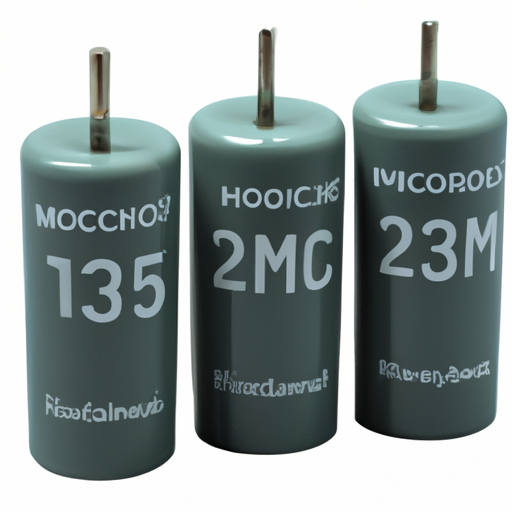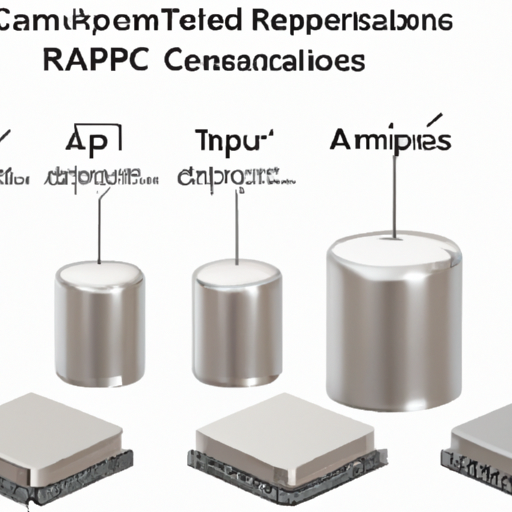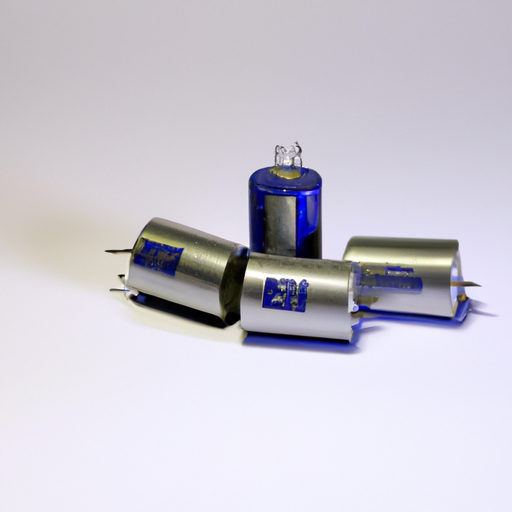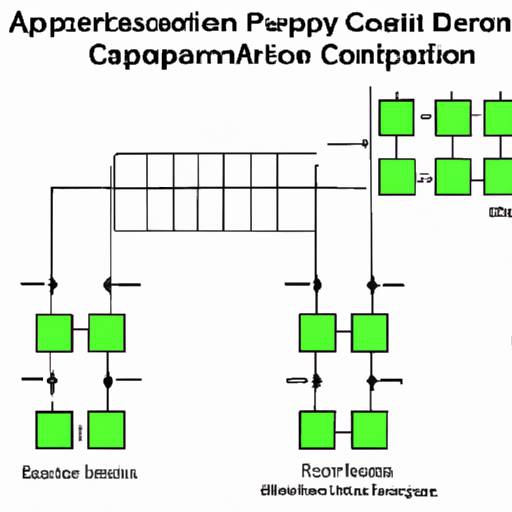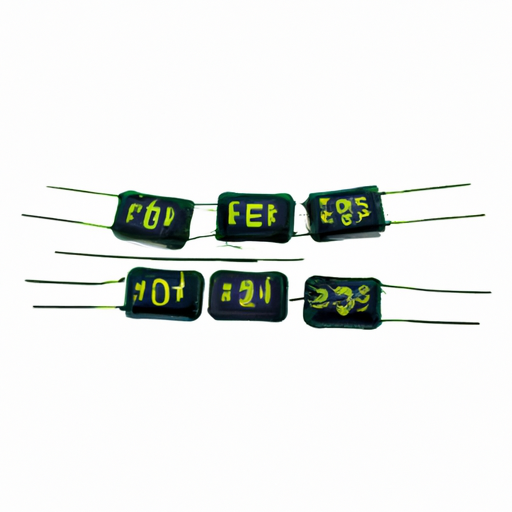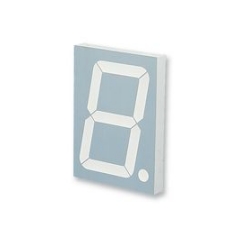What are the components and modules of capacitor voltage?
What are the Components and Modules of Capacitor Voltage?
I. Introduction
Capacitors are fundamental components in electrical engineering, playing a crucial role in various applications, from power supply circuits to signal processing. Understanding capacitor voltage is essential for engineers and technicians alike, as it directly influences the performance and reliability of electronic devices. This article will delve into the components and modules of capacitor voltage, providing a comprehensive overview of their functions, relationships, and practical applications.
II. Basics of Capacitors
A. Definition and Function of a Capacitor
A capacitor is a passive electronic component that stores electrical energy in an electric field. It consists of two conductive plates separated by an insulating material known as a dielectric. When a voltage is applied across the plates, an electric field is created, allowing the capacitor to store charge. The primary function of a capacitor is to store and release electrical energy, making it essential in various circuits.
B. Types of Capacitors
Capacitors come in various types, each suited for specific applications:
1. **Electrolytic Capacitors**: These capacitors are polarized and typically used in power supply circuits due to their high capacitance values.
2. **Ceramic Capacitors**: Known for their stability and reliability, ceramic capacitors are widely used in high-frequency applications.
3. **Film Capacitors**: These capacitors offer excellent performance in terms of stability and low losses, making them suitable for audio and RF applications.
4. **Tantalum Capacitors**: With a high capacitance-to-volume ratio, tantalum capacitors are often used in compact electronic devices.
C. Key Parameters of Capacitors
Understanding the key parameters of capacitors is vital for their effective application:
1. **Capacitance**: Measured in farads (F), capacitance indicates the amount of charge a capacitor can store per volt.
2. **Voltage Rating**: This parameter defines the maximum voltage a capacitor can handle without failure.
3. **Equivalent Series Resistance (ESR)**: ESR represents the internal resistance of a capacitor, affecting its efficiency and performance.
4. **Temperature Coefficient**: This indicates how capacitance changes with temperature, which is crucial for applications in varying thermal environments.
III. Understanding Voltage in Capacitors
A. Definition of Voltage in the Context of Capacitors
In the context of capacitors, voltage refers to the electric potential difference between the two plates. This voltage is directly related to the amount of charge stored in the capacitor and its capacitance.
B. Relationship Between Voltage, Charge, and Capacitance
The relationship between voltage (V), charge (Q), and capacitance (C) is defined by the formula:
\[ V = \frac{Q}{C} \]
Where:
- \( V \) is the voltage across the capacitor,
- \( Q \) is the charge stored in the capacitor,
- \( C \) is the capacitance.
This equation illustrates that for a given capacitance, an increase in charge results in a proportional increase in voltage.
C. Charging and Discharging of Capacitors
Capacitors do not charge or discharge instantaneously; instead, they follow an exponential behavior characterized by the time constant (τ), defined as:
\[ \tau = R \times C \]
Where \( R \) is the resistance in the circuit. The time constant indicates how quickly a capacitor charges or discharges, with approximately 63% of the final voltage reached after one time constant.
IV. Components of Capacitor Voltage
A. Voltage Source
The voltage source is a critical component in charging capacitors. It provides the necessary potential difference to move charge onto the capacitor plates. Voltage sources can be batteries, power supplies, or any device capable of maintaining a constant voltage.
B. Load Resistance
The load resistance connected to a capacitor significantly impacts its voltage behavior. According to Ohm's Law, the voltage across a resistor is proportional to the current flowing through it. When a capacitor discharges through a load, the voltage across the capacitor decreases as the charge is depleted.
C. Internal Resistance of the Capacitor
The internal resistance, or Equivalent Series Resistance (ESR), affects the performance of a capacitor. A higher ESR can lead to power losses and reduced efficiency, especially in high-frequency applications. Understanding ESR is crucial for selecting the right capacitor for specific applications.
D. Parasitic Elements
Parasitic elements, such as inductance and additional capacitance, can influence the voltage behavior of capacitors. These elements can introduce unwanted effects, such as ringing or oscillations, particularly in high-speed circuits. Engineers must account for these parasitic elements when designing circuits involving capacitors.
V. Modules of Capacitor Voltage
A. Capacitor Voltage Divider
A capacitor voltage divider is a circuit configuration that divides the input voltage into smaller output voltages. This module is commonly used in signal processing applications, where specific voltage levels are required for different components. Design considerations include the values of the capacitors used and the desired output voltage levels.
B. Capacitor Voltage Multiplier
Capacitor voltage multipliers are circuits that increase the voltage from a lower input voltage source. They are widely used in power supply circuits, particularly in applications requiring high voltage from a low voltage source. The working principle involves charging capacitors in parallel and discharging them in series, effectively multiplying the voltage.
C. Capacitor Bank
A capacitor bank is a collection of capacitors connected in parallel or series to achieve a desired capacitance and voltage rating. These banks are used in power systems to improve power factor, stabilize voltage, and provide reactive power support. The configuration of the capacitor bank can be tailored to meet specific system requirements.
D. Active and Passive Voltage Regulation Modules
Voltage regulation modules are essential for stabilizing capacitor voltage in various applications. Active voltage regulators use feedback mechanisms to maintain a constant output voltage, while passive regulators rely on resistive or capacitive elements. Both types play a crucial role in ensuring the reliability and performance of electronic circuits.
VI. Practical Applications of Capacitor Voltage
Capacitor voltage plays a vital role in numerous practical applications:
A. Power Supply Circuits
Capacitors are integral to power supply circuits, where they smooth out voltage fluctuations and provide energy storage during peak demands.
B. Signal Processing
In signal processing, capacitors are used for filtering and coupling signals, ensuring that only the desired frequencies pass through.
C. Energy Storage Systems
Capacitors serve as energy storage devices in applications such as renewable energy systems, where they store excess energy for later use.
D. Filtering and Smoothing Applications
Capacitors are commonly used in filtering applications to remove noise from signals and smooth out voltage levels in power supplies.
VII. Challenges and Considerations
A. Voltage Rating and Safety
Selecting capacitors with appropriate voltage ratings is crucial for safety and reliability. Exceeding the voltage rating can lead to catastrophic failures.
B. Temperature Effects on Capacitor Voltage
Temperature variations can affect capacitor performance, leading to changes in capacitance and voltage behavior. Engineers must consider these effects when designing circuits.
C. Aging and Degradation of Capacitors
Capacitors can degrade over time due to environmental factors, leading to reduced performance. Regular maintenance and monitoring are essential to ensure long-term reliability.
D. Importance of Proper Selection and Sizing
Choosing the right capacitor for a specific application involves considering factors such as capacitance, voltage rating, ESR, and temperature coefficient. Proper selection and sizing are critical for optimal performance.
VIII. Conclusion
In conclusion, understanding the components and modules of capacitor voltage is essential for anyone involved in electrical engineering. From the basic principles of capacitance to the practical applications in power supply circuits and signal processing, capacitors play a vital role in modern electronics. As technology continues to evolve, advancements in capacitor technology will further enhance their performance and applications, paving the way for innovative solutions in the future.
IX. References
A. Suggested Reading Materials
- "The Art of Electronics" by Paul Horowitz and Winfield Hill
- "Capacitors: Technology and Applications" by John Smith
B. Relevant Research Papers and Articles
- IEEE Journals on Capacitor Technology
- Research articles on capacitor aging and performance
C. Online Resources for Further Learning
- Electronics tutorials on capacitor theory and applications
- Online courses on circuit design and analysis
This comprehensive exploration of capacitor voltage components and modules provides a solid foundation for understanding their significance in electrical engineering and modern electronics.


